Jayden Higley, Kailee Hurst, Gracie Montgomery, Sarah Vargas, and Layton Zimmerman
Katie Conley – ED-ESP 250
Chaparral Elementary School
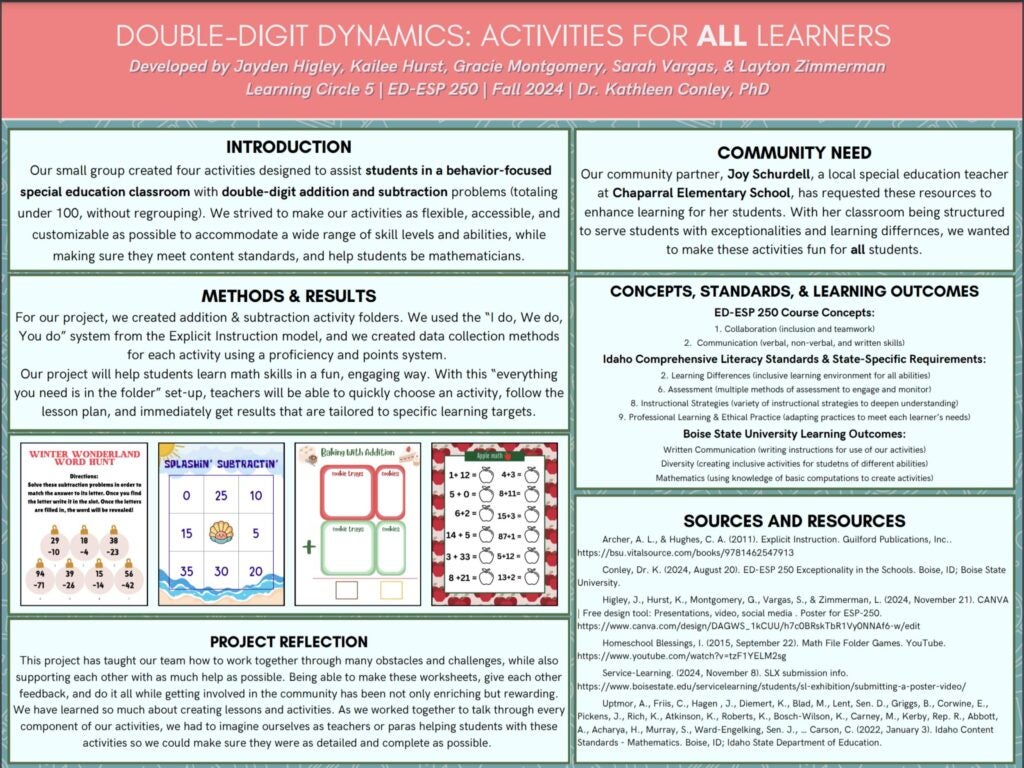
Introduction
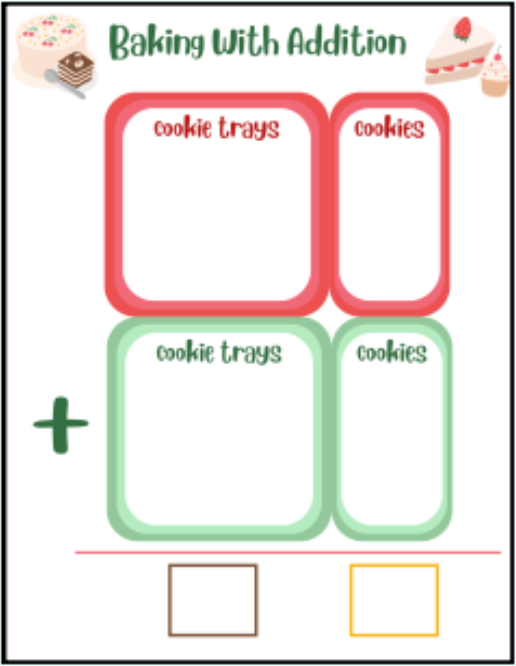
Our small group created four activities designed to assist students in a behavior focused special education classroom with double-digit addition and subtraction problems (totaling under 100, without regrouping). We strived to make our activities as flexible, accessible, and customizable as possible to accommodate a wide range of skill levels and abilities, while making sure they meet content standards, and help students be mathematicians.
Reflection
This project has taught our team how to work together through many obstacles and challenges, while also supporting each other with as much help as possible. Being able to make these worksheets, give each other feedback, and do it all while getting involved in the community has been not only enriching but rewarding. We have learned so much about creating lessons and activities. As we worked together to talk through every component of our activities, we had to imagine ourselves as teachers or paras helping students with these activities so we could make sure they were as detailed and complete as possible.
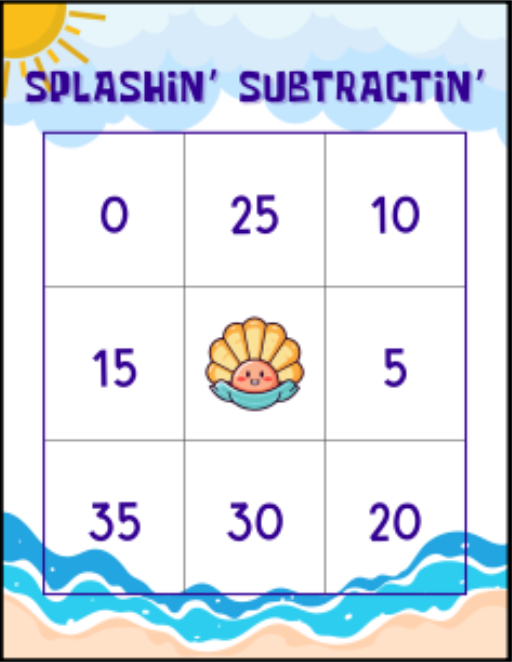
Community Partner: Chaparral Elementary School
Community Need:
Our community partner, Joy Shurdell, a local special education teacher at Chaparral Elementary School, has requested these resources to enhance learning for her students. With her classroom being structured to serve students with exceptionalities and learning differences, we wanted to make these activities fun for all students.
Concepts, standards, and learning outcomes:
ED-ESP 250 Course Concepts: Collaboration (inclusion and teamwork) and Communication (verbal, non-verbal, and written skills)
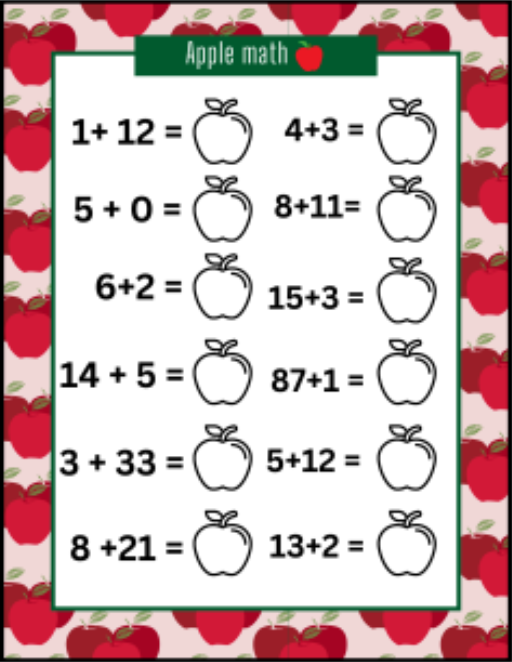
Idaho Comprehensive Literacy Standards and State-Specific Requirements:
2. Learning Differences (inclusive learning environment for all abilities)
6. Assessment (multiple methods of assessment to engage and monitor)
8. Instructional Strategies (variety of instructional strategies to deepen understanding)
9. Professional Learning and Ethical Practice (adapting practices to meet each learner’s needs)
Boise State University Learning Outcomes: Written Communication (writing instructions for use of our activities), Diversity (creating inclusive activities for students of different abilities), Mathematics 9using knowledge of basic computations to create activities)
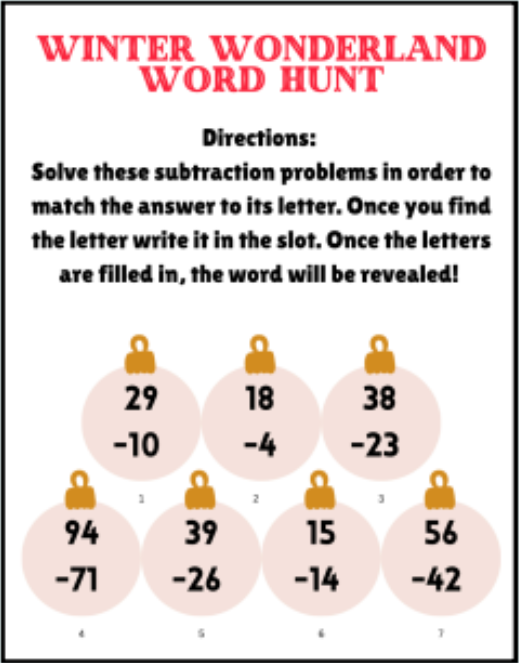
Methods and Results
For our project, we created addition and subtraction activity folders. We used the “I do, We do, You do” system from the Explicit Instruction model, and we created data collection methods for each activity using a proficiency and points system.
Our project will help students learn math skills in a fun, engaging way. With this “everything you need is in the folder” set-up, teachers will be able to quickly choose an activity, follow the lesson plan, and immediately get results that are tailored to specific learning targets.